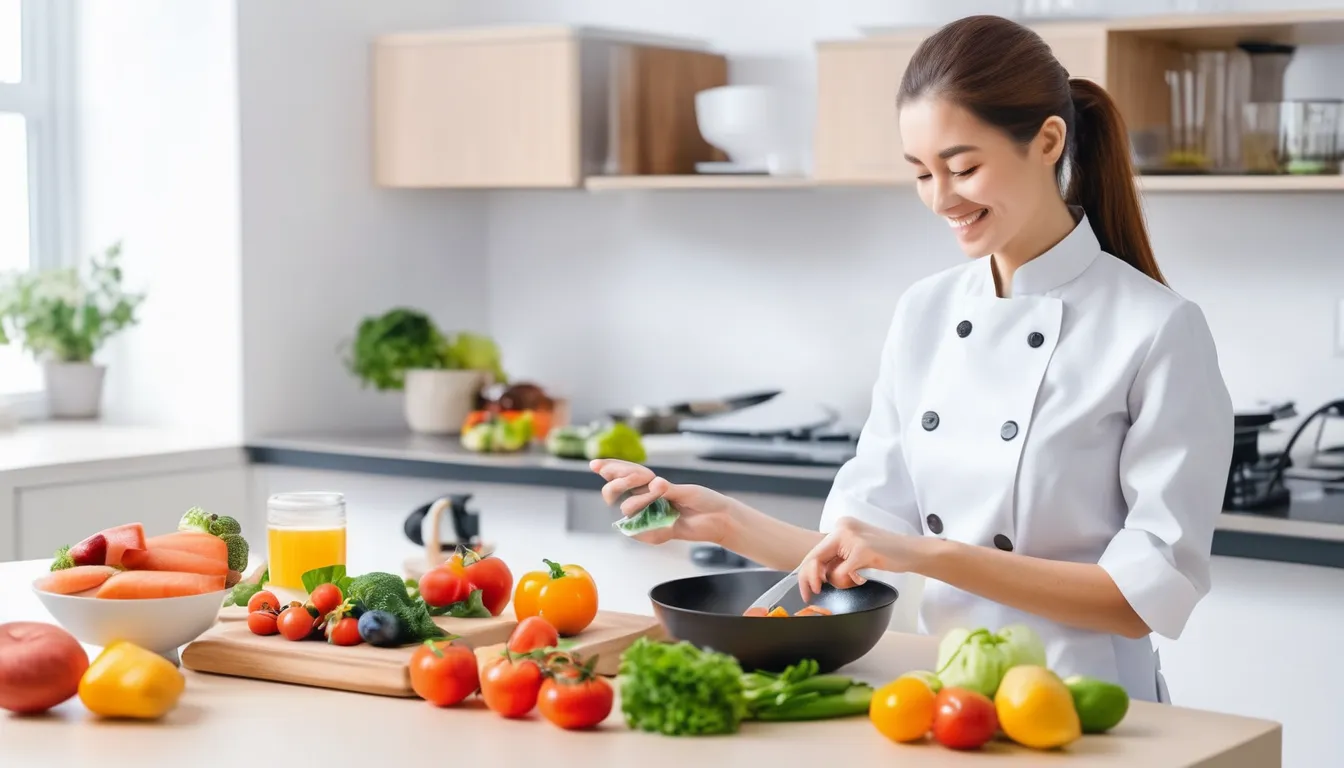As you consider cooking for someone with a disability, you may wonder where to start. You want to ensure their safety and independence in the kitchen, but aren’t sure how to adapt recipes to their needs. You’re likely thinking about the specific challenges they face, such as limited dexterity or visual impairments, and how to overcome them. By exploring simple and safe recipes, you can empower people with disabilities to cook with confidence. But first, you need to understand the essential tools and strategies required to make cooking accessible and enjoyable for everyone involved.
Understanding Disability-Friendly Kitchen Essentials
About one in five people live with a disability, and the kitchen can be a particularly challenging space for them.
You mightn’t realize how many barriers exist in your kitchen until you start thinking about accessibility. Simple tasks like cooking a meal can become daunting when you struggle with mobility, dexterity, or sensory issues.
To create a more inclusive kitchen, you’ll want to focus on adaptable tools and equipment.
You’ll need utensils with comfortable grips, allowing you to hold them securely without straining your hands or wrists.
Look for pots and pans with handles that are easy to grasp and don’t conduct heat.
A kitchen cart or island with adjustable height settings can help you work at a comfortable level, reducing strain on your back and legs.
Additionally, consider installing pull-out shelves and drawers to minimize bending and reaching.
Adapting Recipes for Accessibility
As you’ve tailored your kitchen to accommodate your needs, it’s time to turn your attention to the recipes themselves.
Adapting recipes for accessibility means modifying ingredients, cooking methods, and presentation to suit your abilities.
Start by identifying potential barriers in a recipe, such as complex cooking techniques or hard-to-handle ingredients.
Simplify recipes by breaking down tasks into manageable steps and using assistive tools like one-handed utensils or adaptive grips.
Consider substituting ingredients that are difficult to manipulate, like replacing chopped nuts with pre-chopped ones.
You can also modify cooking methods, such as using a slow cooker instead of constantly monitoring a stovetop.
Presentation is also important; consider serving foods that are easy to eat, like finger foods or single-bite portions.
Safety Precautions for Independent Cooking
Three key areas to focus on when it comes to safety precautions for independent cooking are preventing accidents, managing risks, and being prepared for emergencies.
You can prevent accidents by maintaining a clean and organized kitchen, keeping frequently used items within easy reach, and using non-slip mats or coatings on floors and countertops.
Managing risks involves being aware of potential hazards, such as hot surfaces, sharp objects, and heavy cookware, and taking steps to mitigate them.
For example, you can use oven mitts or tongs to handle hot pans, and store sharp knives and heavy pots in secure, accessible locations.
Being prepared for emergencies means having a plan in place in case of a fire, injury, or other crisis.
Make sure you have a working smoke detector and fire extinguisher in the kitchen, and that you know how to use them.
Keep a phone nearby and have emergency contact numbers handy.
Practice your emergency plan regularly to ensure you’re confident and prepared in case of an unexpected situation.
Assistive Tools and Technology
You’ve taken steps to ensure your kitchen is safe and accessible, now it’s time to explore the assistive tools and technology that can further enhance your independence in the kitchen.
These tools can help with cooking tasks, making meal prep easier and more enjoyable.
One example is adaptive utensils, such as ergonomic handles or angled spoons, which can reduce strain on your hands and wrists.
Another is automatic can openers, which eliminate the need for manual labor.
You can also consider using a slow cooker or Instant Pot, which allow for hands-off cooking and reduce the risk of burns or other accidents.
Furthermore, there are devices that can assist with meal preparation, such as food choppers or electric mixers.
These tools can be especially helpful for individuals with limited dexterity or strength.
Additionally, technology can play a significant role in assisting with cooking.
For instance, voice-controlled assistants like Alexa or Google Home can provide recipe guidance, convert measurements, and even set timers.
You can also explore accessible cookbooks, apps, and websites that offer step-by-step instructions and visual aids to help you navigate recipes.
Navigating Meal Prep and Planning
Most people with disabilities require a well-planned approach to meal prep and planning, which can be a crucial aspect of cooking independently.
You’ll want to consider your energy levels, mobility, and cognitive abilities when deciding what meals to prepare IDDSI cookbook with whole food recipes how to prep them. Start by making a weekly meal plan, taking into account your dietary needs and preferences.
Be realistic about what you can accomplish in a day, and prioritize simple, one-pot meals or slow-cooker recipes.
When it comes to meal prep, focus on tasks that can be done in advance, such as chopping vegetables, marinating meats, or cooking proteins.
You can also prep individual portions to make mealtime easier and faster. Consider using adaptive tools, like reachers or grip aids, to help with tasks that may be challenging for you.
Don’t be afraid to adapt recipes to suit your needs, and don’t hesitate to ask for help when you need it.
With a little planning and prep, you’ll be able to enjoy healthy, delicious meals with minimal stress and effort.
Conclusion
You’ve made it! With these simple and safe recipes, you’re now empowered to cook independently, despite any physical limitations. By adapting recipes, using assistive tools, and prioritizing safety, you can confidently prepare meals that cater to your needs. Remember, cooking is a skill that can be learned and enjoyed by anyone, regardless of ability. So, get cooking and savor the satisfaction of independence in the kitchen!


